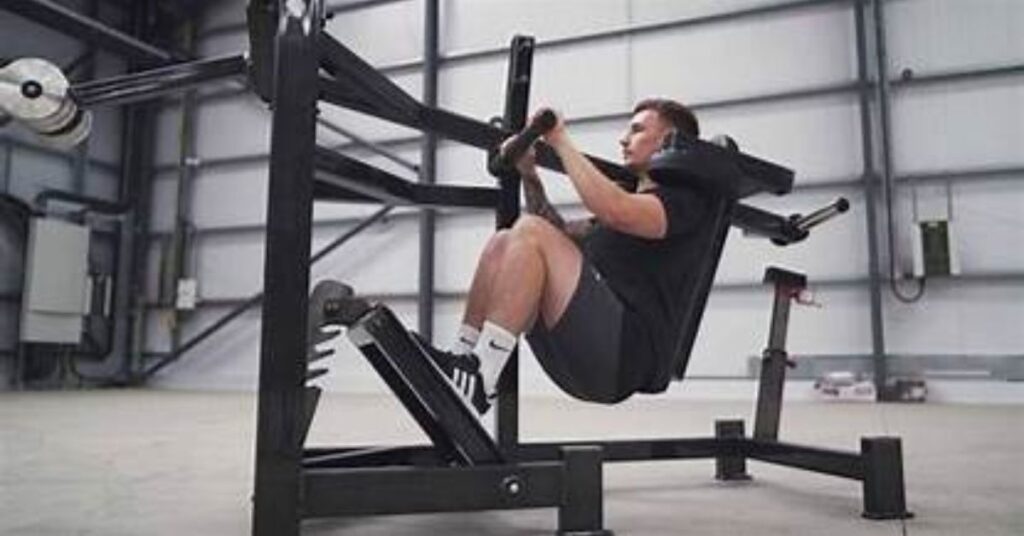Leg day is one of the most important aspects of any fitness routine. Your legs are the foundation of your body, and building strength in your lower body improves balance, agility, and overall performance. While traditional exercises like squats and lunges are common choices, the pendulum squat is an exercise that stands out due to its unique motion and ability to isolate specific muscles. In this article, we will explore what pendulum squats are, their benefits, how to perform them correctly, and why you should incorporate them into your leg day routine.
What is a Pendulum Squat?
A pendulum squat is a machine-based exercise that mimics the natural squatting motion while offering a more controlled and isolated movement. The machine is designed to allow for a full range of motion, engaging muscles like the quadriceps, hamstrings, and glutes. The key difference between pendulum squats and traditional squats lies in the arc-like movement of the machine, which allows for better muscle targeting and less strain on the joints.
Unlike free-weight squats, where balance and stabilization are critical, the pendulum squat machine provides stability, allowing the lifter to focus entirely on muscle engagement. This makes it an excellent option for both beginners and advanced lifters looking to add variety to their leg workouts.
Benefits of Pendulum Squats
Reduced Joint Stress
One of the most significant advantages of the pendulum squat is its ability to reduce stress on the knees and lower back. Traditional squats can be hard on the joints, especially if the proper form is not maintained. However, the pendulum machine’s design supports the body, reducing the load on these sensitive areas. This is particularly beneficial for individuals who have past injuries or suffer from chronic joint pain.
Targeted Muscle Engagement
The arc motion of the pendulum squat machine ensures that your muscles are fully engaged throughout the entire movement. This leads to better muscle activation in the quadriceps, hamstrings, and glutes. Additionally, because the machine stabilizes the body, you can focus solely on driving the movement through your legs, leading to better overall muscle growth.
Enhanced Range of Motion
The pendulum squat machine allows for a deeper squat compared to free-weight squats. This increased range of motion helps to engage more muscle fibers, leading to improved muscle development. Deep squats are known for their effectiveness in building strength, and the pendulum squat machine ensures that you can reach the optimal depth without compromising your form.
Improved Safety
For those new to weight training or those who may struggle with balance and form, the pendulum squat machine offers a safer alternative to free-weight squats. Since the machine provides support and stabilizes the movement, there is less risk of injury. Additionally, the machine allows for easy adjustments, making it a great choice for individuals at all fitness levels.
How to Perform Pendulum Squats
While the pendulum squat machine may seem straightforward, it’s important to ensure proper technique to maximize benefits and avoid injury. Follow these steps to perform the exercise effectively:
- Adjust the Machine
Start by adjusting the pendulum squat machine to your height. Make sure the pad is positioned comfortably on your shoulders, and your feet are placed securely on the footplate. Your feet should be shoulder-width apart, and your toes can point slightly outward. - Set the Resistance
Select the appropriate weight based on your fitness level. If you’re new to pendulum squats, start with a lighter weight and gradually increase as you become more comfortable with the movement. - Engage Your Core
Before beginning the movement, engage your core by pulling your belly button toward your spine. This will help stabilize your upper body and protect your lower back. - Lower into the Squat
Slowly lower yourself into the squat by bending at your hips and knees. Keep your chest up and your back straight as you descend. Focus on controlling the movement and going as deep as possible while maintaining proper form. - Drive Through Your Heels
Once you’ve reached the bottom of the squat, press through your heels to push yourself back up to the starting position. Make sure to maintain control throughout the entire movement, and avoid locking out your knees at the top. - Repeat
Perform 3 to 4 sets of 8 to 12 repetitions, depending on your fitness goals. Focus on slow, controlled movements to maximize muscle engagement.
Common Mistakes to Avoid
Shallow Squats
One of the biggest mistakes people make when performing pendulum squats is not going deep enough. Shallow squats limit muscle activation and reduce the effectiveness of the exercise. Make sure you’re lowering your body as much as the machine allows without sacrificing form.
Rushing the Movement
Pendulum squats are not about speed; they’re about control. Avoid rushing through the movement. Instead, focus on slow, deliberate squats to ensure maximum muscle engagement and reduce the risk of injury.
Neglecting Core Engagement
Many lifters forget to engage their core during pendulum squats, which can lead to improper form and strain on the lower back. Always keep your core tight throughout the exercise to maintain stability and protect your spine.
Incorporating Pendulum Squats into Your Routine
Pendulum squats can be a valuable addition to your leg day routine. Depending on your fitness goals, you can use them as a primary exercise or as a supplementary movement to complement other leg exercises. Here’s how you can incorporate pendulum squats into your workout:
- Beginner Routine:
Start with pendulum squats as your primary leg exercise. Perform 3 to 4 sets of 8 to 12 reps, followed by lighter movements like lunges or leg presses to round out your leg day routine. - Intermediate Routine:
For more advanced lifters, use pendulum squats as a supplementary movement after completing traditional barbell squats or deadlifts. Perform 3 sets of 10 to 12 reps, focusing on controlled movements and full range of motion. - Advanced Routine:
Incorporate pendulum squats into a high-volume leg workout. Combine them with other compound movements like Romanian deadlifts and Bulgarian split squats for a complete lower body workout. Perform 4 sets of 8 to 10 reps with heavier resistance.
Conclusion
Pendulum squats are a powerful exercise that can help you boost your leg strength and overall fitness. Their unique movement pattern, combined with reduced joint stress and increased muscle engagement, makes them an excellent option for anyone looking to take their leg day to the next level. Whether you’re a beginner or an advanced lifter, incorporating pendulum squats into your routine will help you achieve better muscle growth, improved performance, and reduced risk of injury.
So, the next time you’re planning your leg day, consider adding pendulum squats to your workout. With proper form and consistency, you’ll see significant improvements in your lower body strength and overall fitness.







